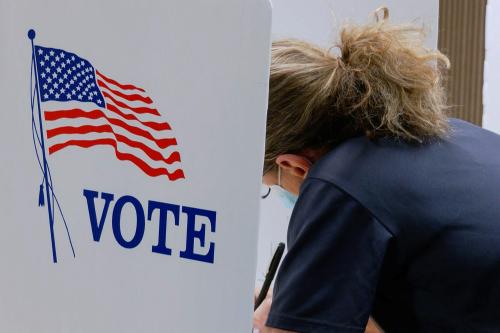In 1996, President Bill Clinton proclaimed that the era of big government was over. It is now clear that the era of the end of big government is over.
The post–World War II social contract–an expanding public safety net, provision of health care and retirement benefits through a substantially unionized private sector, and robust personal savings–is under severe stress. To respond effectively to our long-term challenges, the federal government must command an increased share of gross domestic product and extend its reach in other ways as well. The public sector will be called upon to provide new forms of insurance against economic risks and volatility and to assume more responsibility for health insurance and retirement security. To the extent that markets cannot police themselves or provide reasonable returns for workers, government will have to step in. Through the public mobilization of capital and will, we must supply the public goods–investment in infrastructure, research, and post-secondary education, among others–that we have neglected at our peril. And many millions of Americans will be unable to save for the future without new forms of public encouragement and support.
As well, we will have to construct a new legal and institutional framework that counters the increasing asymmetries of bargaining power that employees in most occupations now experience. While the right to organize and bargain collectively must be aggressively enforced, the kind of union movement that dominated the field from the 1930s through the 1960s may not be adequate for the 21st century. To the extent that it is not, we will need something to supplement it, such as new legal protections for individual workers. For without effective countervailing power, employees will not be able to negotiate for a reasonable share of productivity gains, median wages and earnings will grow slowly, if at all, and the fortunate few at the top will continue to commandeer the fruits of economic growth. At the same time, the private sector will have to do its part to help finance programs for which the public sector assumes increased responsibility. And individuals will have to shoulder more responsibility, in proportion to their means, for their savings and security.
In short, we need nothing less than a new social contract that reorganizes responsibilities among government, individuals, and the private sector. It will take time, experimentation, and political contestation to hammer out its terms.
This would never have been easy, and it is especially challenging now. With large short-term and long-term deficits looming, clearing fiscal space for new initiatives will be difficult at best. And while the public is demanding change, the current administration’s woeful performance since 2002 has reduced public trust and confidence in government’s ability to produce change.
Reprinted with permission from William Galston, “How Big Government Got Its Groove Back,” The American Prospect, Volume 19, Number 6: May 27, 2008. The American Prospect, 2000 L Street, Suite 717, Washington, DC 20036. All rights reserved.”



Commentary
How Big Government Got Its Groove Back
June 9, 2008